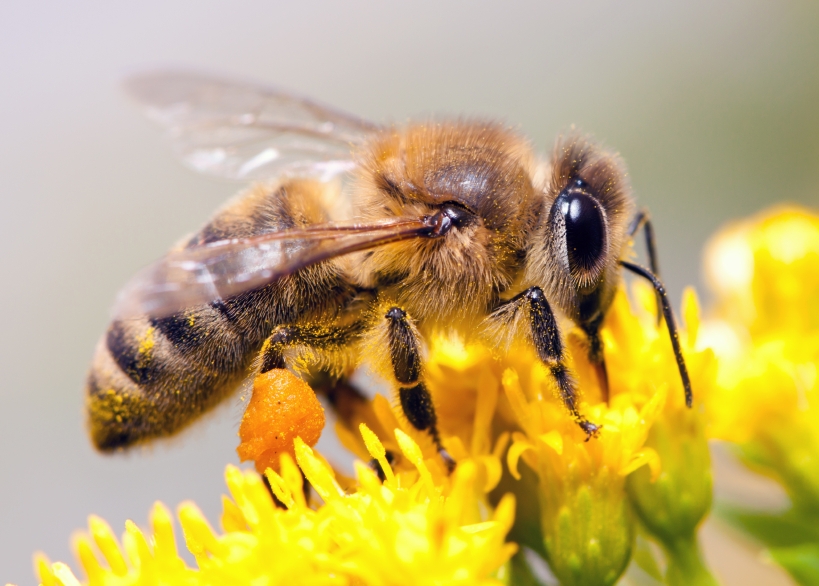The Colony
- A honey bee colony is made up of one queen, several Drones (male), and many workers (all female).
- A honey bee colony can contain up to 60,000 bees during peak season, sometimes more!
- Honey bees can regulate the temperature inside their hives to maintain 92-94 degrees F. even though it may be 10 -110 degrees outside.
- During winter, the bees form a cluster around the queen to keep her warm.
- Honey bees are the only insect that produces food for human consumption.
- The colony simultaneously forages on many species of flowers, but an individual bee tends to forage on a single species during each foray.
- Honey bees contribute 8 to 10 billion dollars to the U.S. economy annually.
- Honey bees pollinate approximately 1/3 of all the food we consume.
The Queen
- A queen honey bee has an average life span of 3 years. She may live as long as 5 years.
- The queen can lay up to 2,000 eggs per day during peak season.
- Even though she has a stinger, the queen does not sting.
The Workers
- The worker bees are all female.
- The average age of a worker honey bee is about 4-6 weeks during spring and summer. In winter, they live up to 4 months.
- The average worker produces about 1/12 teaspoon of honey in her lifetime.
- Honey bees can fly up to 15 miles per hour.
- Honey bees can fly up to 5 miles from their hive to forage.
- A honey bee visits 50 to 100 flowers during a single foraging trip.
- A honey bee can flap its wings up to 200 times per second!
- Only the worker honey bee will sting. Her stinger will pull from her body and remains where she stung. She will die after only one sting.
The Drones
- Male honey bees, called Drones, have no stinger. Their only job is to mate with the queen.
- After mating, the drone dies.
- To conserve resources for the winter, the drones are kicked out to die.
- Drones are prevalent during spring and summer.
